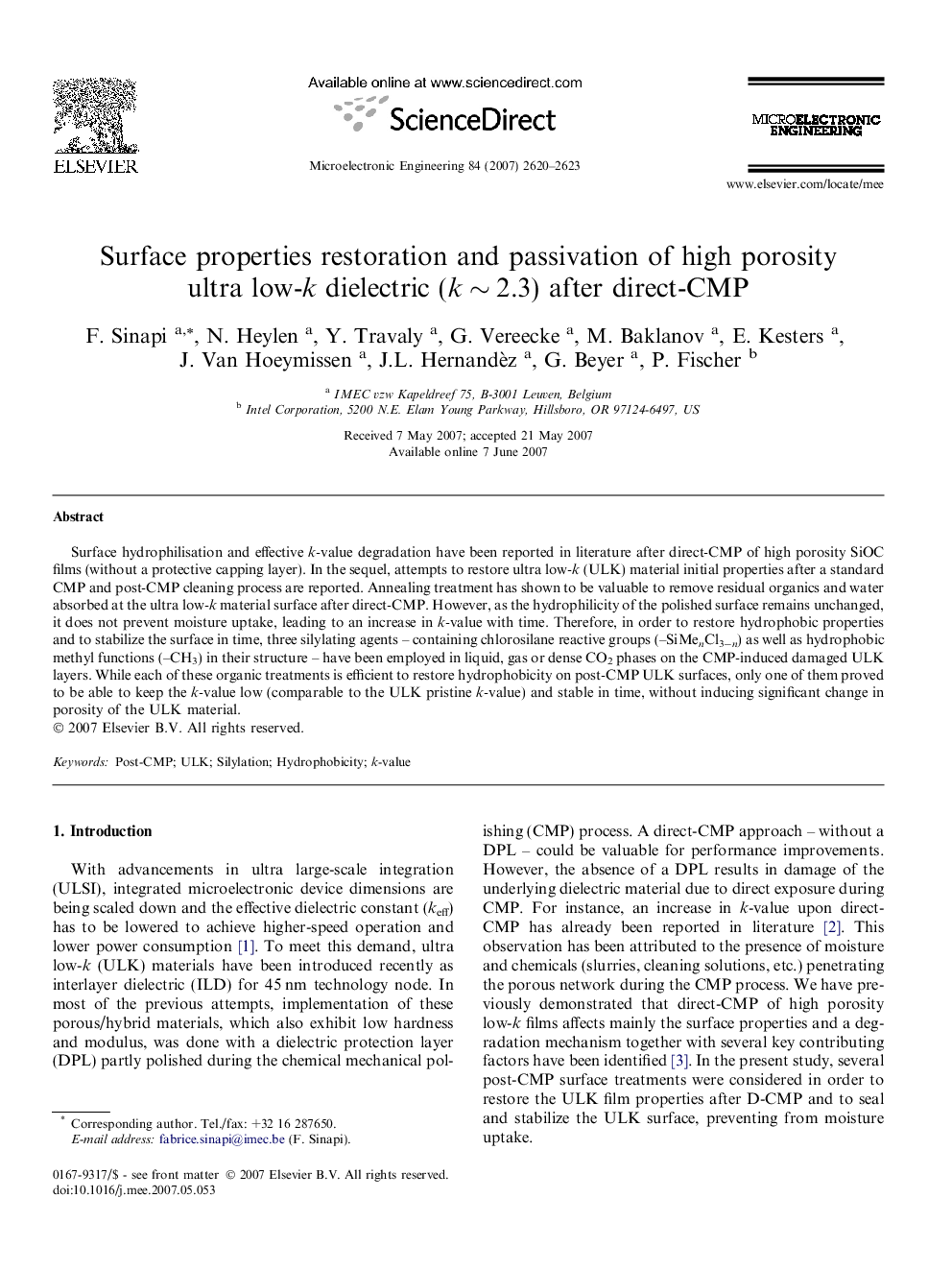| Article ID | Journal | Published Year | Pages | File Type |
|---|---|---|---|---|
| 540795 | Microelectronic Engineering | 2007 | 4 Pages |
Surface hydrophilisation and effective k-value degradation have been reported in literature after direct-CMP of high porosity SiOC films (without a protective capping layer). In the sequel, attempts to restore ultra low-k (ULK) material initial properties after a standard CMP and post-CMP cleaning process are reported. Annealing treatment has shown to be valuable to remove residual organics and water absorbed at the ultra low-k material surface after direct-CMP. However, as the hydrophilicity of the polished surface remains unchanged, it does not prevent moisture uptake, leading to an increase in k-value with time. Therefore, in order to restore hydrophobic properties and to stabilize the surface in time, three silylating agents – containing chlorosilane reactive groups (–SiMenCl3−n) as well as hydrophobic methyl functions (–CH3) in their structure – have been employed in liquid, gas or dense CO2 phases on the CMP-induced damaged ULK layers. While each of these organic treatments is efficient to restore hydrophobicity on post-CMP ULK surfaces, only one of them proved to be able to keep the k-value low (comparable to the ULK pristine k-value) and stable in time, without inducing significant change in porosity of the ULK material.
